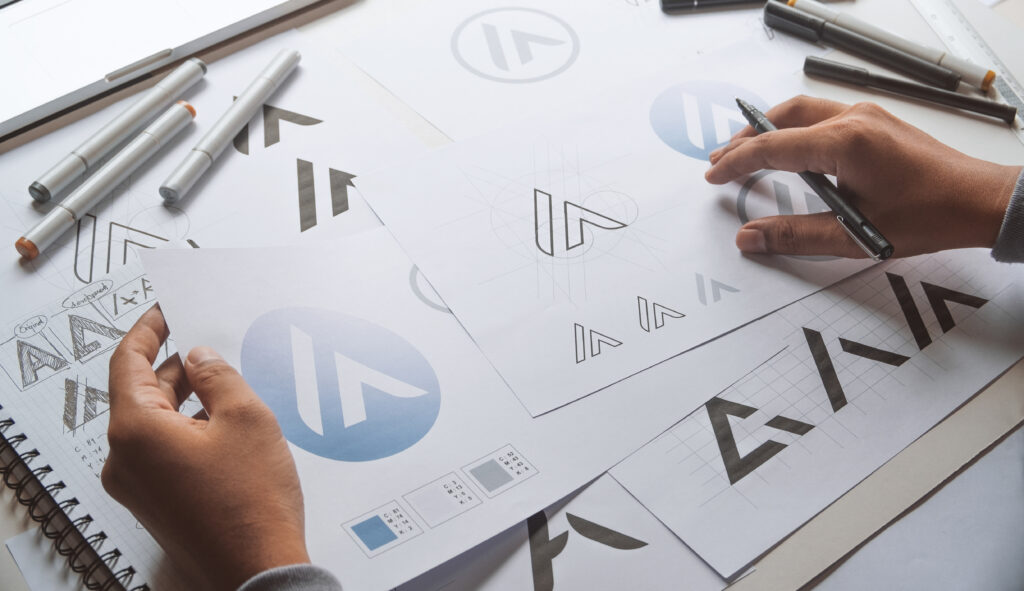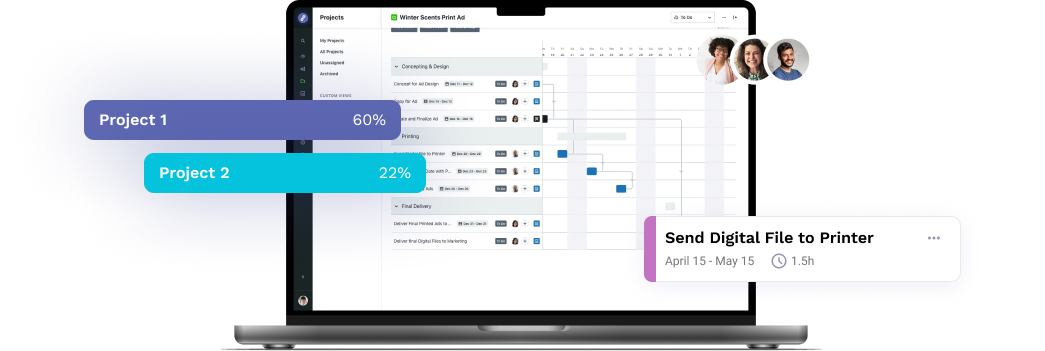
Why Is Your Brand Logo’s Design and Usage So Important?
How do you get people to use only your latest brand logo, and to do so consistently and correctly? First off, you need to make them understand why the correct usage of a logo is so important. What makes a good logo great, and what is the value of it? And why is consistency so important?
As a marketer, designer, or brand specialist, you know how which version of your company’s logo should be used. How many times have you seen a logo being used incorrectly? Wrong color, wrong placing, a version of the logo you retired two years ago or – my personal favorite – toe-cringingly pixelated.
Getting people to use a logo correctly depends on how the people working with your brand feel about it. Getting people to understand the value of a logo and why it matters is an important piece of the puzzle.
To help you do that, we have gone in-depth and listed some insights from various sources about the business value of a logo, and why the looks and consistent use of your logo matter.
Why Is Brand Logo Design So Important?
Do you want to go deeper into the importance of a logo? All you need to do is look at the core value of a brand. Then, look at the relationship between the brand and the logo. A brand adds financial value to the organization it belongs to, this we can state quite certainly by now. But first, what is at the core of a brand?
In his seminal book, Olins explains what brands are and how to create and maintain them. At the core of the brand, he writes, are a clear identity and mission.
Interesting to note is that the visual elements, though important, only come last, here. The logo is the prime identifier for all brands. Its purpose is to reflect the core idea of the organization.
Your logo is important because the brand is important. Additionally, your logo is often the first thing that people see, and the first thing people will remember. It forms a strong connection with how your brand makes them feel. It is the prime identifier and the first and most important vessel to carry your brand’s core values and message.
So, what feeling do you want people to have when they think about your brand? And what should your logo design be like to be able to carry that feeling?
What Is Good Brand Logo Design?
It is difficult to come to an agreement, even between designers and brand experts, about what constitutes good logo design. This is partly because factors such as tastes and preferences always play a big role. Does that mean there are no research-based criteria that we should look for in logo design?
It turns out there are. Another visionary in the realm of branding and corporate identity, Roel Stavorinus, writes in his “Logo x Logo [in Dutch]”:
“Research by Kantar Millward Brown indicates that a good logo meets the following three requirements:
A good logo is clear: simple, short, and logical. It is consistent: over time and across the various places where stakeholders might encounter it. And it’s communicative: it reinforces your core message.”
What is interesting to note, here – in addition to simplicity and communication – is how important consistency appears to be.
What Is the Business Value of a Brand Logo?
So, a logo is often the first thing people see. It is the number one characteristic of your brand image that people will remember. Additionally, we know that a well-managed brand adds financial value to a business. But can we say the same about the business value of a logo, specifically?
We can also safely say that the quality and consistent use of a logo impacts overall brand performance and equity. And it extends all the way down to the bottom line of the organization.
C. Whan Park, Andreas B. Eisingerich and Gratiana Pol report in MIT Sloane Business review: “What our research shows is that effectively managed brand logos can help companies to build stronger customer brand commitment and thus allow a brand to improve its financial performance”. The authors report the value of a visual symbol over the simplicity of a name brand.
We can easily deduce that a good logo adds financial value. Next to that, having a symbol as your logo adds more value than a name-based logo would. But what should that symbol look like? What are characteristics of effective logo design?
Design Characteristics of a Good Logo
Recent research points out that simplicity and symmetry can influence the effectiveness of a logo. Symmetry and asymmetry influence our feelings, in terms of how exciting we think a design is.
Jonathan Luffarelli, Mudra Mukesh, and Ammara Mahmood published research in the Harvard Business Review on the effectiveness of logos. From their study:
“The design characteristics of logos can considerably impact consumer behavior and brand performance. Prior studies on logos have shown that their simplicity or complexity can influence the funding decisions investors make, and that their symmetry or asymmetry can boost brand equity.”
The study further showed that a descriptive logo will, in most cases, increase brand performance more than a non-descriptive one.
Descriptive (upper left and bottom right) vs. non-descriptive logos.
Next to the characteristics mentioned above, many design aspects can trigger certain characteristics in the minds of consumers.
Logo Guidelines: Why Consistent Use of a Logo Is Important
Color, font, symmetry; descriptive vs. non-descriptive – all these factors can contribute to adding business value to your brand with your logo. There is no right way, but there is one thing all organizations can do to reap the benefits of a great logo. All the effects we have discussed here, live, or die with consistency.
Focusing on branding and brand elements, the concept of consistency works in two major ways:
1. Consistency in the relationship between the core idea of the brand and the logo.
You need to use the brand consistently in the sense that what you communicate, how you communicate and what your communications and content look like, are consistent with the identity of your brand. More so now than ever before, people in your audience will figure out if what you are saying and trying to show on the outside matches with what really goes on in your organization.
2. Consistent use of your logo
People need to be reminded of things, and things need to be repeated a lot before they stick in people’s minds. Memory, feelings, associations – they are the psychological mechanisms that a brand is built up out of. You need to give people the exact same set of stimuli – or at least as perfectly the same as possible – to make sure you obtain that much-desired spot in their list of trusted and preferred brands.
If your audience is clear on who you are, knows what to expect, trusts you and like you, that means you’ve “branded” an impression through repetition and consistency – specifically, with your behavior, your words (your tone of voice, personality, and your overall message), and your brand visuals – of which your logo is the first.
Now, getting everybody that works with your brand assets to use assets like your logo consistently is something you will not achieve overnight. The aim of this article has been to help you get across the value of a logo and the reasons why consistent use of a logo is important.
Are you looking to strengthen your brand by streamlining workflows and harmonizing all brand collateral under a single, uniform platform? Lytho has just what you need. Feel free to reach out to us by scheduling a demo. We look forward to speaking with you!
Do you want to give yourself and your creative team more room for creative stimulation by automating the boring stuff? Lytho helps you streamline your entire workflow and harmonize all brand collateral under a single, uniform platform. Feel free to reach out to us by scheduling a demo and learning how our creative solutions can boost the effectiveness of your creative projects. We look forward to speaking with you!

Ready to simplify your creative operations and start having a little fun at work again? Schedule time to talk with us.
Let us show you how Lytho’s Creative Operations Platform helps in-house creative and marketing teams do better work, ease the stakeholder experience, and stay on brand.
Schedule a Demo